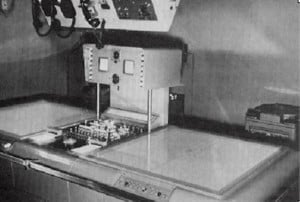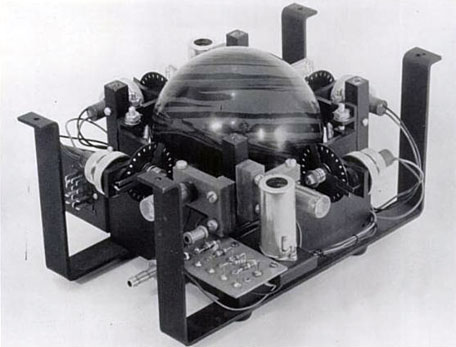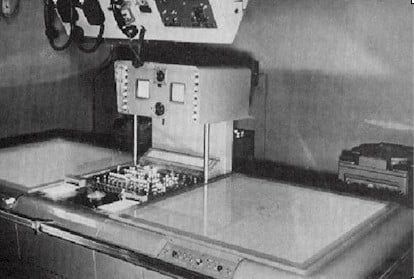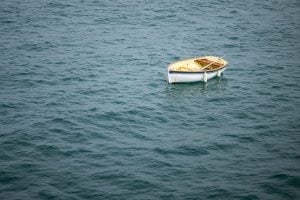
4 Facts About DATAR
- The work on the Comprehensive Display System (CDS) by the Royal Navy, which Canadian engineers were familiar with, sparked the development of the DATAR system.
- DATAR systems worked on drum memory.
- The display of the DATAR was an adapted radar unit, and a trackball and trigger were used as inputs.
- The DATAR system eventually led to ReserVec and the Ferranti-Packard 6000 mainframe.
What Is DATAR: Explained
A digital battlefield information system, called DATAR, or Digital Automated Tracking and Resolving, was innovated.
DATAR compiled data from a naval task force’s sensors into a single “overall view,” then broadcast to all ships and displayed on plan-position indicators akin to radar displays. As a result, commanders could now see data from all sources, not just their ship’s sensors.
Quick Facts
- Creator (person)
- Ferranti Canada
- Release Date
- 11/01/1963
- Original price
- CAN$1.9 million (almost CAN$15 million in year-2000 dollars)
- Operating System
- N/A
- Developed By (company)
- Royal Canadian Navy
Ferranti Canada’s small team had constructed a workable pulse-code modulation (PCM) radio system that could broadcast digitized radar data over large distances by 1950.
The start of the Korean War transformed the government’s expenditure priorities drastically, and in 1951, 100 additional ships were ordered.
With this increased interest in DATAR, they spent $1.9 million ($19 million in 2021) creating a prototype over the next two years. The prototype machine retained data for up to 500 elements using 3,800 vacuum tubes and a magnetic drum. The technology could deliver data for 64 targets with a precision of 40 by 40 yards over an 80 by 80 nautical mile grid.
The prototype employed around 30,000 vacuum tubes and a magnetic drum to store information for 500 items. Operators on the ships utilized the first trackball globally (see below image, fashioned from a typical Canadian five-pin bowling ball) and a trigger to communicate position information across the links to the DATAR, which was positioned on one of the convoy’s ships. DATAR then processed the data, which translated everything into the “local view” of the individual ships and delivered it back to them over the same lines. It was displayed on a graphical user interface — another console initially adapted from a radar unit.
How To Use DATAR
Only one ship in a task force would carry the DATAR computer in a production situation as per the tutorial. The rest of the ships had computer terminals that allowed the operators to send location data to the DATAR using a trackball based on a Canadian five-pin bowling ball and trigger. The data was then processed by DATAR, which converted the positions into the local views of the individual ships and delivered it back to them through the same PCM lines. All the work was done by the trained individuals who had taken proper tutorials to handle the software.
DATAR operated admirably, with everyone receiving accurate radar and simulated sonar “blips” displays. The test went off without a hitch, and the Navy was reportedly delighted.
Ferranti was keen on transferring the DATAR system to a transistor-based design, believing that this would address the problem.
DATAR Release History
In August 1948, the Canadian Defence Research Board (DRB) called for proposals from various Canadian electronics firms in 4 areas, one of which was servo-systems for computers, including automatic following devices for radar systems. A copy of the letter was sent to Ferranti Canada, then a small distributor of Ferranti’s United Kingdom electrical equipment, and the CEO of Ferranti, Vincent Ziani de Ferranti decided to attend the introductory meeting in October 1948. In this meeting, however, de Ferranti was disappointed to learn that the budget was basically zero.
The outcome of the disappointing meeting was not zero, however, because a researcher at the Navy’s electrical laboratories in Ottawa, named Jim Belyea, took the initiative and approached Ferranti with the idea of DATAR, a system for acquisition, digital processing, transmission and display of naval information, dreamed by him since 1946.
Ferranti accepted the proposal and the work began in 1949.
By 1950 a part of the system was ready (a radio system for transmission of digitized radar data over long distances, called PCM). The prototype machine was ready in 1953. During the tests, DATAR performed well, and the Navy was apparently extremely pleased. The only serious concern was the failure rate of the vacuum tubes, which meant that the machine was non-operational for a considerable amount of time. Ferranti was extremely interested in adapting the DATAR system to a transistor-based design, which they believed would solve this issue.
The prototype used about 30,000 vacuum tubes and stored data for up to 500 objects on a magnetic drum. Data was sent to the system by operators on the ships, who used the first in the world trackball (see the lower image, built using a standard Canadian five-pin bowling ball, and a trigger to send position info over the links to the DATAR, which was located on one ship in the convoy. DATAR then processed the locations, translated everything into the various ship’s “local view”, and sent the data back to them over the same links. Here it was displayed on something like a graphical user interface — another console, originally adapted from a radar unit.

The device, invented by the Ferranti engineering team of Kenyon Taylor (1908-1986), a British electrical engineer and inventor, sometime in early 1952, used a bowling ball from the Canadian version of the game of five-pin bowling (diameter around 16 cm).
The work on DATAR did not go to waste. Ferranti Canada used the basic DATAR design on a number of projects, transistorizing it in the process. The system eventually led to ReserVec and the Ferranti-Packard 6000 mainframe.
DATAR: End Of Development
It would have been prohibitively expensive to equip the whole Royal Canadian Navy fleet with the DATAR. Instead, the Navy sought to distribute development expenditures across a more significant manufacturing line to reduce total costs, inviting the Royal Navy and the US Navy representatives to see the system. They were equally stunned; in fact, one US officer was so taken aback that he checked under the display console, thinking the display was a hoax. Regardless of how impressed they were, they seemed to believe they could do better independently and declined to participate. Under the guidance of the Elliot Brothers, the Royal Navy began development on its Comprehensive Display System that year, and the US Navy started to work on its Naval Tactical Data System in 1956.
As a result, the DATAR project terminated on a low note. In less than four years, the system had gone from concept to working prototype, and it was impressive by any standard.
The DATAR effort was not entirely in vain. On various projects, Ferranti Canada adopted the fundamental DATAR architecture, transistorizing it in the process. ReserVec and the Ferranti-Packard 6000 mainframe were both born from the system.



